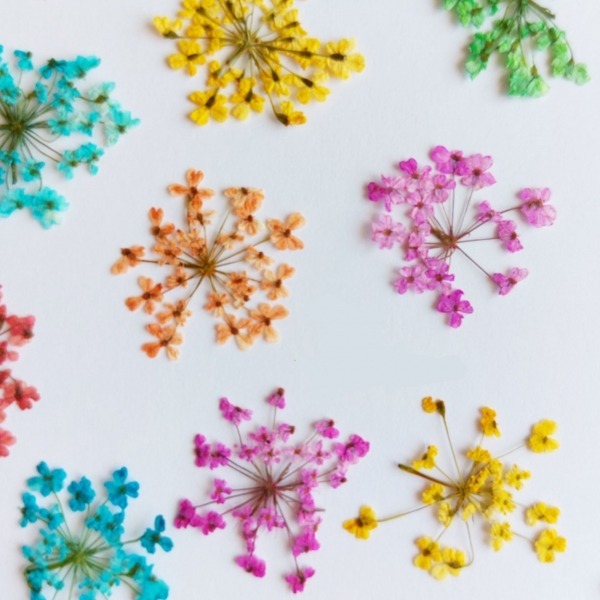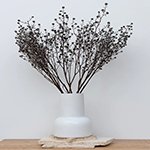Hemlock flower specifications
- Scientific name : Conium maculatum L
- Order : Apiales
- Family : Apiaceae
- Genus : Conium
- Species : C. maculatum
- French name : Cigue tacheté e, C. de Socrate, Cigue des officines, Grande cigue
- English name : Herb Bennett, Hemlock
- German name : Schierling
- Italian name : C. maggiore, Cicuta
About hemlock flower
Hemlock flower : A poisonous plant, hemlock has a repellent smell when its leaves are crushed, helping to ensure that accidental poisonings don’t occur very often – even livestock studiously avoid it. This biennial plant prefers damp places and can grow in huge colonies on waste ground, riverbanks and ditches, but can also be seen along roadside verges. It produces umbels (umbrella-like clusters) of white flowers in June and July.
read more : Everything about vaccaria flower : How to Plant & care for them

How to identify
A tall, upright plant, hemlock can be distinguished by the distinctive and unpleasant, mousy smell of its foliage and its purple-spotted stems. Its leaves are finely divided and large, and its flowers are small and white and appear in umbrella-like clusters. hemlock flower
What areas is the hemlock native to?
This plant is native to Europe and Western Asia and has been introduced to North America as an ornamental plant, often found in the United States and southern Canada. Hemlock are commonly found along fences, roadsides, ditches, abandoned construction sites, pastures, crops, and lands that may be mistaken for harmless plants.
Types of hemlock species
Hemlock has 4 different species, two of which have not been identified in Iran yet, but in Europe and other northern hemispheres, especially in India, China and Japan, and is used as medicine. There are two other species in Iran called blue hemlocks and small hemlocks in Iran. hemlock flower
read more : Everything about scabiosa flower : How to Plant & care for them
How to Identify Poison Hemlock
Poison hemlock really isn’t hard to identify and there are a few key identification features to be on the lookout for.
-
Stems
The most important identification feature of poison hemlock are the stems and stalks. Poison hemlock stems are hairless, hollow, and almost always have distinctive purplish-red splotching or streaking on them, especially towards the base of the plant.
These purple or reddish colored markings are a sure giveaway that it is poison hemlock. Many sources say that the stems of poison hemlock don’t always have this splotching. hemlock flower
-
Flowers
Poison hemlock flowers can be confusing. because they resemble other white umbel shaped flowers, especially those in the Apiaceae family. The flowers bloom in late spring and grow in rounded clusters that are called compound umbels. Each individual tiny flower has five petals.
After the flowers bloom they form small green fruits with wavy ribs that contain highly poisonous seeds that resemble anise, fennel, or caraway seeds. many poison hemlock flowers showing the compound umbel shape. Poison hemlock flowers grow on highly branched stalks that can grow up to 8-10 feet (3 meters) tall.
-
Leaves
The leaves of poison hemlock look very similar to parsley, chervil, and wild carrot, which makes them difficult to distinguish. They are opposite and compound, hairless, lacy, and triangular in shape. When crushed or brushed against, the leaves emit a very unpleasant musty smell.
The reason it’s so important to learn how to identify poison hemlock (Conium maculatum) is because it is often mistaken for other plants that are edible and medicinal. hemlock flower
read more : Everything about lagurus grass : How to Plant & care for them
Queen Anne’s lace (Daucus carota)
There are several differences here to consider. hemlock flower
- First is overall size, as Queen Anne’s lace only grows to about 2-3 feet in size.
- Queen Anne’s lace has hairy stems and leaves, while poison hemlock’s are smooth. Here is one easy way to remember it: “the Queen has hairy legs.”
- Queen Anne’s lace flowers bloom later in the summer and have a flatter shape. They typically have a single dark purple or red flower in the center.
- Queen Anne’s lace also has 3 pronged bracts at the base of the flowers, and the older flowers curl up into a bird’s nest shape.
Usages of hemlock flower ( Iran dried hemlock )
This plant is one of the classified medicinal plants , it is used in traditional medicine and pharmaceutical industry, and its cultivation is only for medicinal purposes and common industrial aspect. This plant needs moist soils and grows in rocky, abandoned and wet lands and its flowers appear in July and August of the second year
hemlock flowers is one of Iran’s export goods and has provided a great opportunity for Iranian traders to bring a lot of currency to the country by exporting dried hemlock flower . Both types of hemlock flower products can be exported either as medicinal plants or as dried flowers because each has its own customer. hemlock flower
The export of dried hemlock flowers has provided a great opportunity for wholesalers and exporters of dried hemlock flowers and other medicinal plants to make significant profits.

read more : Drying natural flowers | Introducing 8 wonderful ways to dry flowers
Propagation and harvest time of hemlock plant
Hemlock is propagated by seed and has an easy and fast growth that grows in a wide range of soils. This plant is biennial in that it is not harvested in the first year, but its harvest time is next summer.
hemlock flower



0 Comments